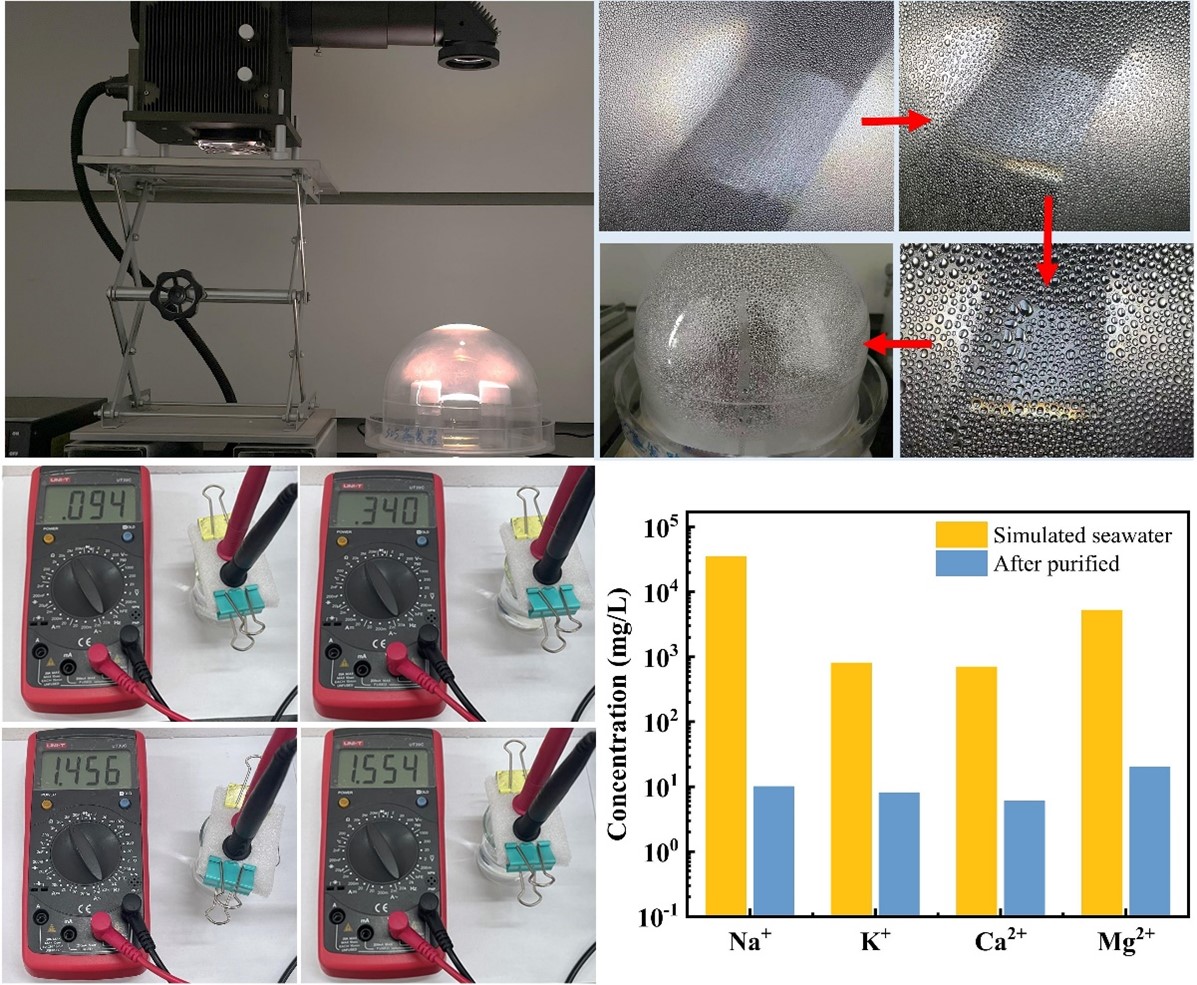Research Progress: Novel basalt fiber fabric-based photothermal material for high salinity wastewater treatment and solar interface
Editor: | Jun 07,2024
Solar-driven interfacial evaporation (SIE) is a sustainable, efficient, and environmentally friendly desalination technology. It has great potential for solving the shortage of clean water and environmental pollution that humanity faces. Nevertheless, low strength, inadequate efficiency, and complicated preparation process of photothermal materials continue to be primary barriers to achieving the widespread application of SIE technology. More recently, fibrous materials with unique flexibility, durability, processability, and versatility have demonstrated excellent performance in heat conversion, water transport, and thermal management. One of fibrous materials are made from minerals, basalt fiber (BF) is a filament made from molten basalt rocks; it has high hardness, mechanical strength, high chemical stability, and excellent corrosion, temperature, and fatigue resistance. Presently, researchers have tried various methods to use basalt fibre fabrics in interfacial evaporation desalination, and although they also show excellent photothermal conversion and evaporation performance, the complex and energy-intensive preparation processes limit their mass production. Therefore, further research on the preparation of BF fabric-based photothermal evaporation materials with simple process and high stability can promote its further development.
Based on this, the Separation materials and technology research team of Xinjiang Technical Institute of Physics and Chemistry (XTIPC) used a low-cost and eco-friendly photothermal material was prepared successfully by using multi-walled carbon nanotubes (MWCNTs), sodium alginate (SA) hydrogel, and basalt fiber (BF) fabric for obtaining purified/drinking water from seawater/brackish water. The results indicated that newly developed MWCNTs-SA/BF fabric had better wettability, evaporation performance, and purification capability. The evaporation rate of MWCNTs-SA/BF evaporator using simulated high salinity seawater could reach 1.48 kg m?2h?1 and 2.5 kg m?2h?1, under 1 and 2 suns illumination, respectively, and solar energy utilization efficiency is 91.6 % under 1 sun irradiation. Cyclic evaporation test results show that the accumulated solid salts can be removed by hand washing and the fabric has good durability under long-term solar evaporation. Furthermore, an excellent water purification performance of MWCNTs-SA/BF fabrics was also demonstrated by evaluating the purity of water samples and determining the changes in the four major ions (Na+、K+、Ca2+and Mg2+ ) in seawater before and after evaporation experiments This work provides a simple, practical, and economical approach to preparing a novel BF fabric-based evaporator that has great potential as an ideal candidate for solar energy water purification.
The relevant research results were published in the Surfaces and Interfaces(Surfaces and Interfaces, 2024, 51, 104542). This research work was received support from the Tianchi Doctor Program of Xinjiang Uygur Autonomous Region, the Natural Science Foundation of Xinjiang Uygur Autonomous Region, Shanghai Cooperation Organization (SCO)Science and Technology Partnership Program and the International Science and Technology Cooperation Program.
Article:https://doi.org/10.1016/j.surfin.2024.104542

Fig. 1: (A) Indoor solar evaporation device; (B) Variation of the steam with different evaporation times; (C) A multimeter was used to assess the purity of the water sample; (D) change in metal ions concentration in simulated seawater after desalination by MWCNTs-SA/BF fabric evaporator.
附件下载:
 (86) 991-3838931
(86) 991-3838931 lhskj@ms.xjb.ac.cn
lhskj@ms.xjb.ac.cn (86)991-3838957
(86)991-3838957 40-1 Beijing Road
Urumqi, XinjiangChina
40-1 Beijing Road
Urumqi, XinjiangChina